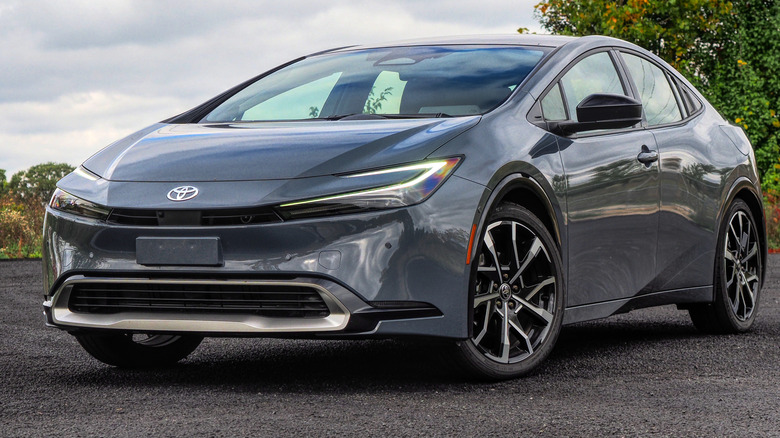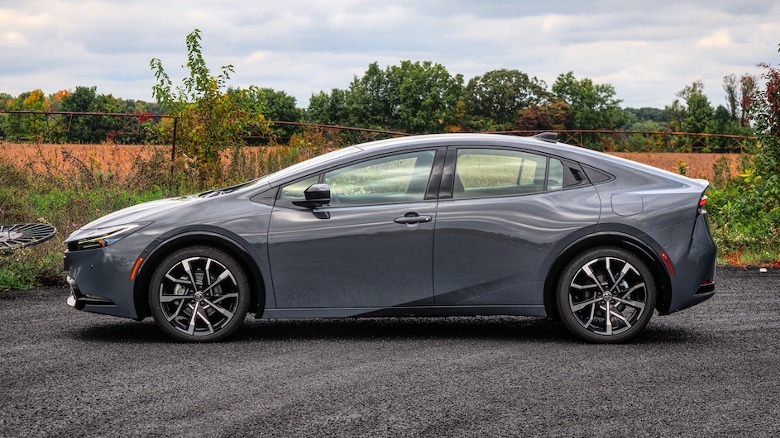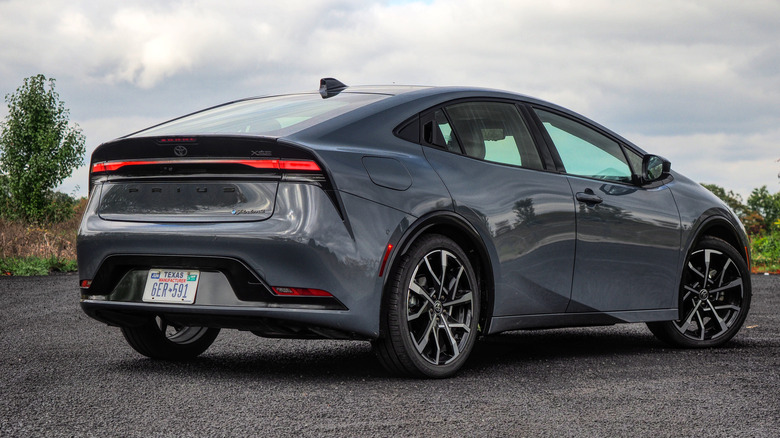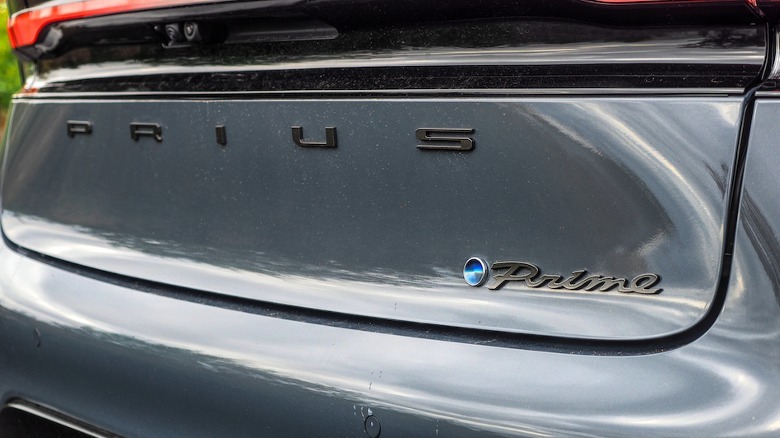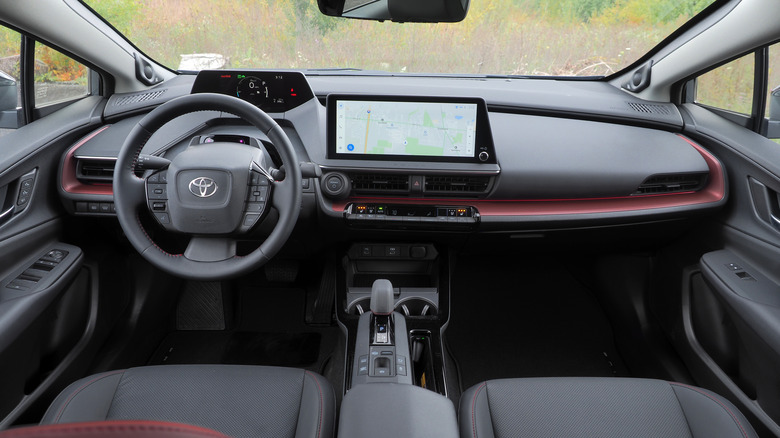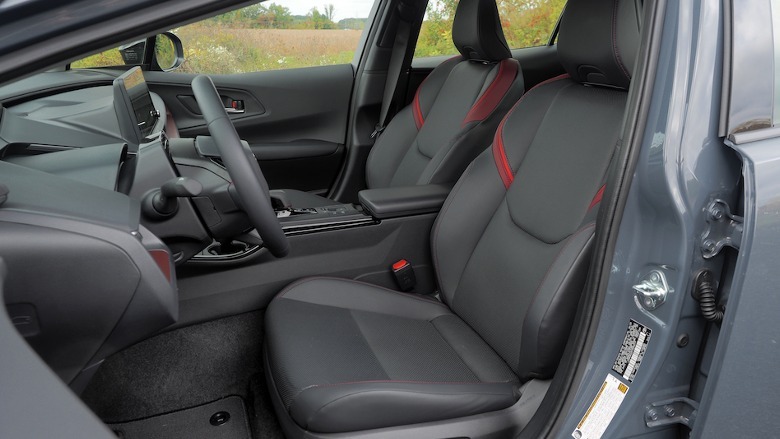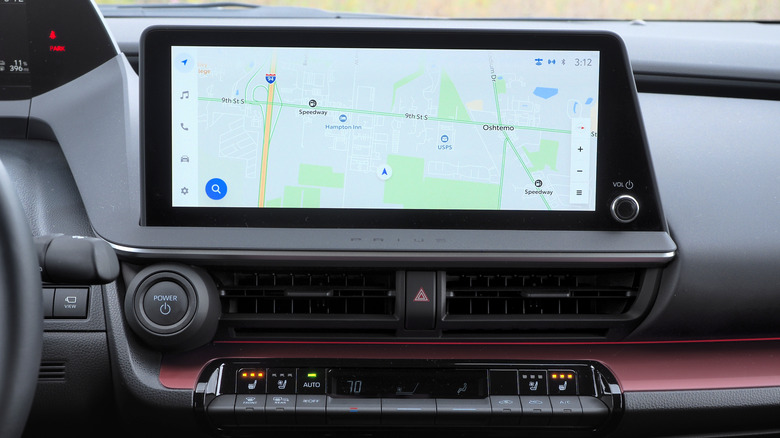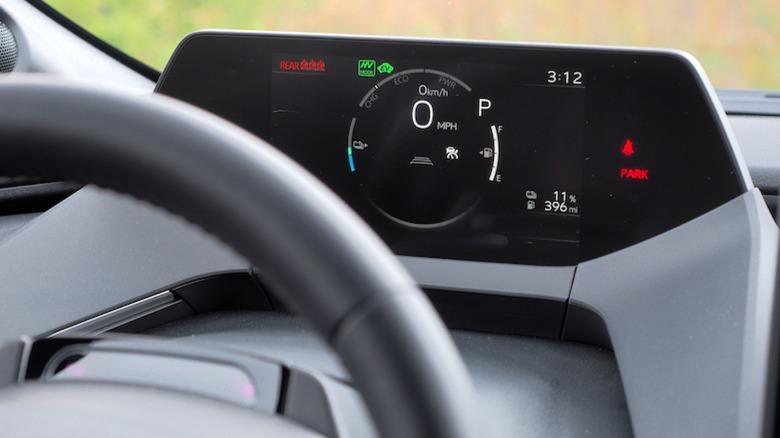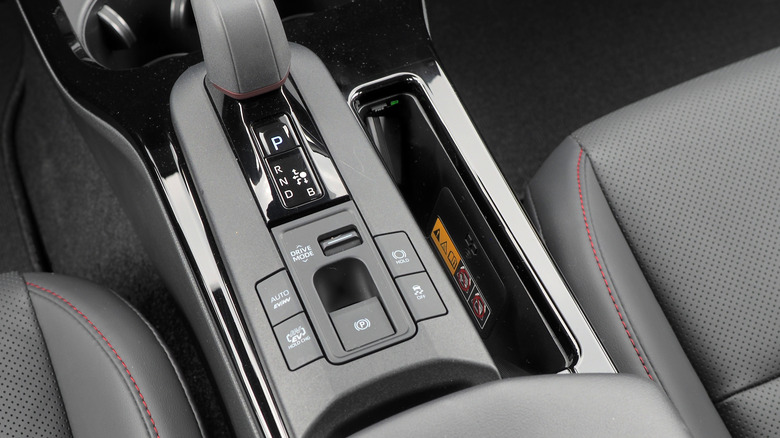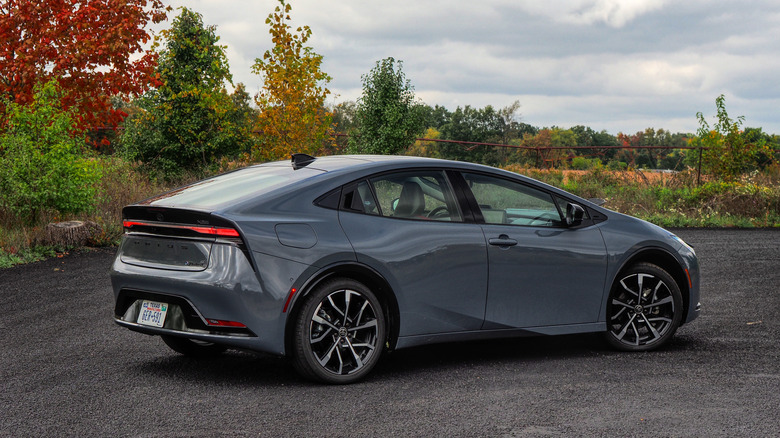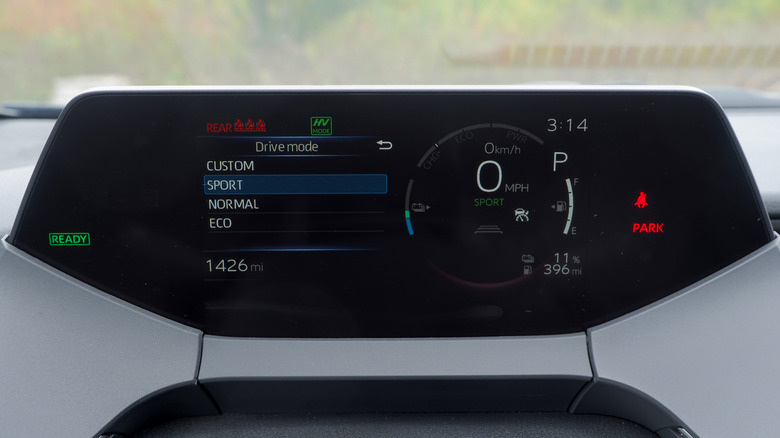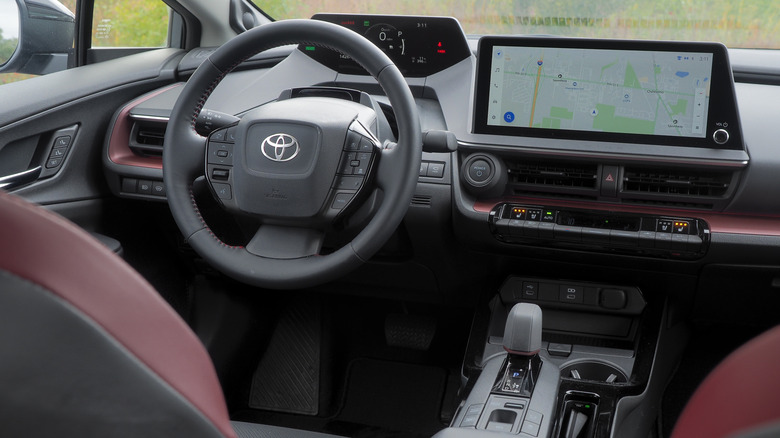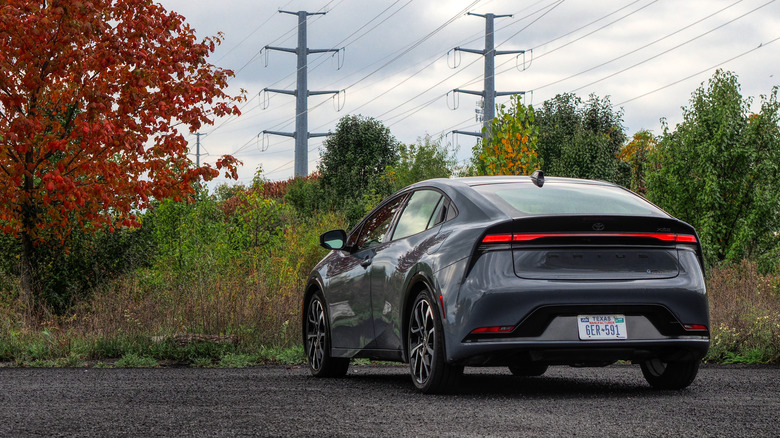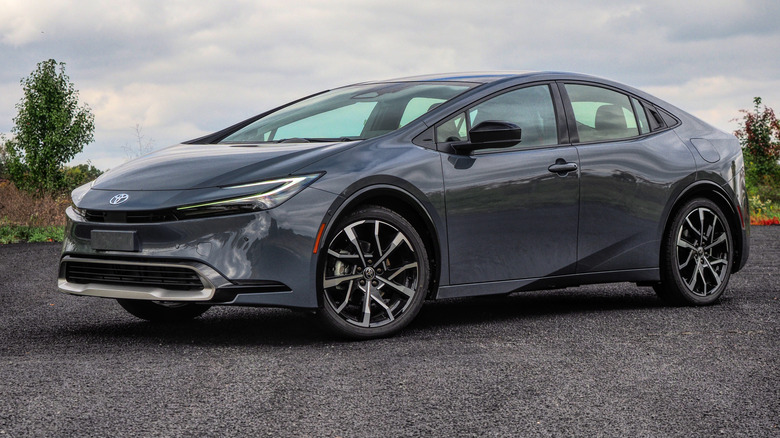2023 Toyota Prius Prime Review: A Plug-In Hybrid To Lead The EV Charge
- Head-turning style
- Flexible and frugal PHEV drivetrain
- Well-equipped for an aggressive price
- Plenty of safety tech
- Excellent warranty
- Dashboard can be a little confusing
- Doesn't qualify for US EV tax incentives
For a while, it seemed like Toyota was content to squander its early-adopter advantage in hybrid cars. The Prius may have basically created the category, but rivals not only caught up but exceeded the gas-electric hatchback before forging ahead with plug-in hybrids and fully electric models. Now, with the Prius Prime, Toyota has demonstrated it can still surprise in a segment it's synonymous with.
Head-turning style, clever and capable technology, and attainable pricing are all equally important here. The new Prius Prime couldn't afford to stint on performance or design, quite frankly, and yet you're getting a decent uptick in complexity for not a huge price delta over the regular Prius. It's arguably the sort of challenge that Toyota faces best.
It's also a topical one. Despite the auto industry's wholesale shift toward EVs, the reality is that lots of drivers simply aren't ready to make that leap. Charging infrastructure, range anxiety (whether legitimate or imaginary), and cost remain significant hurdles: A plug-in hybrid still represents a sweet spot in electrification for plenty of people. In this case, that sweet spot starts at $32,675 plus $1,095 destination.
A genuinely handsome car
It still feels strange to describe a Prius as good-looking, but there's absolutely no denying that the fifth generation car had a serious glow-up. Gone are the odd proportions, weird-for-weird's-sake bulges and swoops, and the general sense that someone in Toyota's design studio was doing Mad Scientist experiments on jelly beans.
Instead, you get a piece of genuinely excellent car design, and one that holds up — though styling is subjective, of course — from every angle. At the front, the Prius Prime's snake-like headlamps and sharply creased nose leave it reminiscent of an angry amphibian. The aero-friendly swoop of the roof is beguilingly elegant from the side; it's a shame that you need to be high above it to see Toyota's Coke bottle pinched waist.
At the rear, neat light cluster detailing joins a bold PRIUS badge that the PHEV wears proudly, and rightly so. The base Prius Prime SE trim gets 17-inch wheels with aero covers; XSE and XSE Premium switch to striking 19-inch wheels.
Spacious cabin has some design oddities
The Toyota's cabin is a little more challenging, aesthetically speaking. It's the droopy steering wheel and the way it partly blocks the high-mounted driver display that I suspect are most culpable here. You need to be okay with setting the wheel's position lower to your lap than maybe would be typical, and with its upper edge obscuring a crescent at the bottom of the standard 7-inch cluster screen.
There's no actual information shown in that chunk — Toyota intentionally leaves it blank — but it's disconcerting nonetheless. One possible benefit is that, while you can't have a head-up display on the Prius Prime, the positioning of the instrument cluster does minimize the degree to which you have to take your eyes off the road.
Otherwise, the main hurdle is getting to grips with the plentiful buttons. Maybe Toyota's design team heard the widespread complaints about the rise of touch-only dashboards; perhaps it just overspent on switchgear and needed to use it up. Regardless of the reason, there are a whole lot of buttons here, spread across the wheel, behind it on both sides, under the touchscreen, and in the center console.
A tale of two screens
It's odd because Toyota's latest infotainment system is a vast improvement over what previous cars languished with. SE and XSE get an 8-inch touchscreen with six USB ports, 6-speaker audio, and wireless Apple CarPlay and Android Auto. The XSE Premium upgrades to a 12.3-inch touchscreen and 8-speaker JBL audio system.
The main UI is clean and easy to navigate, the touchscreen is responsive, and even the voice controls are unexpectedly accurate. It makes the interface on the driver's cluster display feel all the more out-of-place, though, with its at-times confusing graphics. Unfortunately, some settings are only available through that smaller screen.
Most conspicuous — and most frustrating — of those is adjusting the regenerative braking level. The Prius Prime coasts like a gas car in "D" but ramps up the regen in "B" mode; it also gets more aggressive when you switch to Sport mode. However, to change between the three levels of regen (including the near-one-pedal driving setting) you need to dig through the menus in the cluster display. It's unintuitive and can only be done when the car is stationary, so forget about tweaking it according to changing road conditions.
Gas, electric, and a balance of the two
As for the Prius Prime drivetrain, like any plug-in hybrid it's a fairly complicated affair. On the gas side, there's a 2.0-liter four-cylinder engine, which packs 150 horsepower and 139 lb-ft of torque. It's combined with a 120 kW (161 horsepower) electric motor, with an electronically-controlled continuously variable transmission (CVT) piping the power to the front wheels.
Total system power is 220 hp and 139 lb-ft of torque. That's certainly not enough to compete with Toyota's other Prime-branded hybrid, the potent RAV4 Prime, which brings 302 hp to the party, but it's 24 horses more than the mild hybrid Prius offers. 0-60 mph comes, Toyota claims, in 6.6 seconds.
A 13.6 kWh battery brings more electric-only range than the outgoing Prius Prime. Just how much you'll see depends on whether you were swayed by the larger wheels, mind. On the 17-inch set, the Prius Prime SE is EPA-rated for 44 miles; on the 19-inch versions, the XSE and XSE Premium clock in at 39 miles.
Up to 600 miles of range can't be dismissed
You can, if you so wish, set the Prius Prime to EV mode and drive in purely electric form for as long as the battery will last. For most people, though, it's probably easier to leave the Toyota to make the decision between gas and electric on its own.
As an EV, the Prius Prime zips and nips neatly. Obviously, its electric motor isn't going to compete with most pure-electric cars out there, and though it'll do highway driving, the experience feels a little sluggish when it comes to overtaking. For city driving, though, it's the perfect example of why a plug-in hybrid makes so much sense, particularly given the typical American driver uses their car for less than 40 miles on average each day.
Hybrid mode is where the Prius Prime shows its main strength. The gas engine kicks in almost seamlessly: at 45+ mph speeds you can hardly hear it, and Toyota has done an excellent job of isolating its vibration from the cabin. Suddenly you get 550-600 miles (wheels depending) of total range.
Unexpectedly good fun
There's a Sport mode, too, and it actually leaves the Prius Prime feeling surprisingly eager. While the RAV4 Prime may be more powerful, it's hardly tuned for back road fun. The Prius' lower center of gravity — the battery is tucked under the rear seats, so you get the same 20.3 cu-ft of trunk space with the seats up as you do in the mild hybrid Prius — and its level-riding suspension conspire to make the hybrid unexpectedly engaging. Someone call the Gazoo Racing team: we need a GR Prius Prime over here, stat.
The only real downside to the hybrid system I observed is when the battery is low or near-depleted. At lower urban speeds the engine drone is more noticeable, but more disconcerting is the way its sounds aren't necessarily in line with what your foot is doing on the accelerator. There's none of that "press the pedal more and the engine works harder" linearity we're used to from combustion-only vehicles, and that disparity only makes the growl from the front more obvious — and more jarring.
A few ways to recharge
Like the mild hybrid Prius, you could feasibly ignore the electric side of things and just fill up the Prius Prime with gas every so often. With the EPA suggesting you'll see 48 to 52 mpg on the combined cycle from the combustion engine alone, the Toyota is still frugal either way. The assumption is, though, that you're going to plug in for the most cost-effective and green driving.
On a standard household outlet, you're looking at around 11 hours for a full charge. If you've got a 240V Level 2 charger — either at home or a public charger — then that's cut to around 4 hours. As is the case with most PHEVs, there's no DC fast charging support. Unfortunately, that doesn't just mean you won't see faster rates at such chargers, but that the Prius Prime can't be used with them at all since their plug has extra pins the Toyota can't accommodate.
Then there's the Prius Prime's solar roof, available as an option on the XSE Premium trim. In theory, leaving the Toyota parked outside in full sunlight could top up the battery or keep features like the air conditioning running while on the move. In overcast Michigan in the depths of fall, however, it proved a lot less useful.
Reassuring safety tech, reassuring warranty
All Prius Prime trims get Toyota Safety Sense 3.0 with adaptive cruise control, lane departure alerts with steering assistance, lane tracing assist, and road sign assist. There's also Toyota's pre-collision system with pedestrian detection, automatic high beams, and Proactive Driving Assist which helps with braking and steering on certain roads.
Blind spot warnings with rear cross-traffic alert come standard, too, along with front cross-traffic alerts, lane change assist, safe exit assist, and eight airbags. XSE trim and above gets front and rear parking assistance with automatic braking (an option on SE trim); XSE Premium trim can be had with a 360-degree camera and Advanced Park assistance.
Hybrids can leave some potential buyers concerned about mechanical complexity, but Toyota's 36 month/36,000 mile basic warranty and 96 month/100,000 hybrid systems warranty should go some way to assuaging those worries. There's also a 120 month/150,000 mile hybrid battery warranty, and a 60 month/60,000 mile powertrain warranty, and Toyota bundles the first two years/25,000 miles of scheduled servicing along with unlimited roadside assistance for the same period.
Toyota Prius Verdict
It's no stretch to say that the Prius Prime is the pick of the Prius range right now. Considering just how strong this latest generation of Toyota's hybrid is, that counts as high praise. While the mild hybrid version makes saving gas eminently straightforward, this Prime plug-in hybrid adds a genuinely improved driving experience and the flexibility of fully-electric range, even if it's not as much as you'll get in an entirely electric vehicle.
You pay for that capability, mind. The regular Prius starts at $27,650 (plus destination); a Prius Prime starts at $32,675 (plus destination). Since the PHEV doesn't qualify for the current U.S. federal tax incentive for EVs, there's no discount there, either.
Even without those perks, however, it's hard to criticize the Prius Prime. Sure, a fully-electric car is greener, and probably faster too, but for plenty of people the familiar convenience of filling up a gas tank has undeniable appeal. More than that, though, a PHEV could replace a gas-only car, get better economy and cut emissions, and still be up to the challenge of impromptu road trips. Far from being a stepping stone to full EV, the Prius Prime combines the best of both worlds — gas and electric — with a price tag that's hard to argue with given the fuel savings on offer here.
